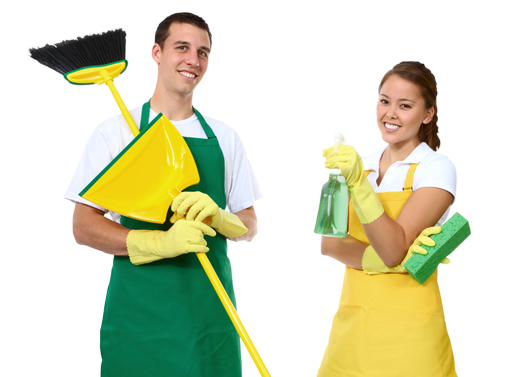Pro Tips for a Pristine Stovetop Free from Burnt Residue
Posted on 31/08/2025
Pro Tips for a Pristine Stovetop Free from Burnt Residue
A clean stovetop isn't just about aesthetics--it also contributes to an efficient and hygienic kitchen. Yet, keeping your stove gleaming and free from burnt-on residue can seem like a daunting task, especially for busy households or avid home cooks. This comprehensive guide will walk you through the best practices, expert advice, and practical hacks to maintain a residue-free stovetop. Say goodbye to stubborn, burnt-on messes and hello to a sparkling cooking surface!
Understanding Why Burnt Residue Accumulates
Before diving into stovetop cleaning tips, it's crucial to understand why burnt residue is such a persisting problem. Food splatters, oil spills, and accidental overflows during cooking are part of every chef's experience. When these residues are not wiped away promptly, the heat from the burners bakes them onto the surface, causing stubborn stains and sometimes even damaging your valuable stovetop.
Common causes include:
- Leaving spills unattended during busy cooking hours.
- Using the wrong cleaning techniques or harsh chemicals that set in stains instead of removing them.
- Allowing moisture or acidic ingredients (like tomato sauce) to linger and corrode the surface.

Essential Tools for a Burn-Free Stovetop
Invest in the right cleaning supplies to make your task easier. Here are must-have items for seamless stovetop upkeep:
- Microfiber cloths: Trap more residue and gently buff surfaces without scratching.
- Non-abrasive sponges: Protect the surface while removing dirt.
- Baking soda: A natural, gentle abrasive for tackling tough stains.
- White vinegar: Cuts through grease and leaving surfaces shiny.
- Plastic or silicone scrapers: Remove burnt-on food without leaving marks.
- Dish soap: Essential for breaking down oily splatters.
Step-By-Step Guide to a Spotless Stovetop
1. Daily Habits for a Clean Stove
Consistency is key to a residue-free cooktop. Incorporate these simple habits into your routine:
- Wipe right after use: When the surface is cool but not cold, use a damp microfiber cloth or sponge to wipe away fresh spills and splatters before they harden.
- Check burner covers and drip pans: Many stoves have removable components that trap residue. Clean these weekly to keep them free from buildup.
- Use the splash guard: Whenever you cook with sauces or fry food, place a splatter screen or lid to minimize mess.
2. Tackling Tough, Burnt-On Residue
Even with the best intentions, some food residue may stick and burn onto your stove. Follow these pro steps:
-
Soften the residue:
- Dampen a cloth with hot, soapy water and lay it over the burnt area for 10-15 minutes. This helps loosen stubborn debris.
-
Sprinkle with baking soda:
- Baking soda works wonders on tough, burnt patches. Sprinkle a generous amount over the affected spot.
-
Add vinegar:
- Pour a small amount of white vinegar onto the baking soda to create a fizzing action. Let it sit and do its magic for several minutes.
-
Scrub gently:
- Using a non-abrasive sponge or scraper, gently remove the residue. For glass or ceramic surfaces, always avoid metal scrapers.
-
Wipe clean and dry:
- Finish with a damp microfiber cloth and then dry thoroughly to restore shine.
Deep Cleaning by Stovetop Type
Every stovetop has its unique cleaning requirements. Below is a detailed breakdown tailored to gas, electric, and glass/ceramic stoves for a burnt residue-free finish.
Cleaning Gas Stoves
Gas stoves often have removable grates and burners. Here's how to achieve a fresh, grease-free look:
-
Remove grates and burner caps:
- Soak in a sink with hot, soapy water for 30 minutes. Use a soft brush to scrub away charred residue.
-
Handle burners with care:
- Avoid submerging burners with electrical connections. Clean only with a damp cloth and dry thoroughly before placing back.
-
Target the stovetop surface:
- Apply a paste of baking soda and water, let it sit, then gently scrub stains away.
Electric Coil or Solid Disk Stoves
Follow these proven steps:
-
Remove coils:
- If possible, unplug and remove coils. Wipe them with a damp cloth; do not immerse in water.
-
Clean drip pans:
- Drip pans can accumulate burnt residue easily; soak and scrub with a baking soda paste.
-
Surface wipe-down:
- Clean with a mild detergent and non-abrasive sponge to avoid scratching the surface paint.
Glass or Ceramic Cooktops
For an ultra pristine cooktop, a gentle approach is essential:
-
Wait until cool:
- Prevent cracks by ensuring the surface is completely cool.
-
Use a dedicated cleaner:
- Specialized glass stovetop cleaners are formulated to remove burnt residue without scratching.
-
Use a scraper at an angle:
- If needed, use a plastic razor blade gently at a 45-degree angle to lift residue.
-
Buff to a shine:
- Once clean, buff with a microfiber towel for a streak-free glass finish.
Natural & Homemade Solutions for Residue Removal
Store-bought cleaning products are effective, but many chefs swear by natural cleaning hacks for a shiny, streak-free finish:
- Lemon juice: Its acidity helps dissolve burnt residue, especially greasy spots.
- Baking soda paste: Mix with a few drops of water and apply to tough stains.
- Old toothbrush: Perfect for reaching crevices around burners or knobs.
- Hydrogen peroxide: Mix with baking soda for a fizzing cleaner that tackles heavy residue (test first on a small area).
Proactive Tips to Prevent Burnt Stovetop Messes
Maintaining a clean stovetop is much easier when you prevent messes in the first place. Here's how:
- Monitor cooking temperatures: Excessively high heat causes foods and oils to splatter & burn.
- Use spill guards: Rimmed pots or splatter shields trap messes before they hit the surface.
- Act quickly: Wipe any spill immediately; the longer it sits, the harder it is to remove.
- Rotate cookware regularly: Avoid repeated build-up by not cooking on the same burner every time.
- Regular maintenance: Include stovetop cleaning in your weekly kitchen routine.
When to Seek Professional Help
Most burnt residues can be tackled at home, but sometimes you may encounter persistent stains or technical issues (like damaged burner elements or electrical faults). If:
- Burnt residue won't budge even after repeated cleaning attempts and you notice discoloration,
- You discover intricate wiring or internal components exposed below the burners,
- You smell burning plastic or see sparking,

Frequently Asked Questions About Stovetop Cleaning
Q: How often should I clean my stovetop?
A: For a truly pristine burner and residue-free surface, a quick wipe after each use is optimal. Schedule a deep clean once a week or any time you notice burnt spots forming.
Q: Is it safe to use steel wool or abrasive pads?
A: No. While these may seem effective, they can scratch and permanently damage your stovetop. Always use non-abrasive tools.
Q: What stovetop cleaner is best for my cooktop?
A: For glass, choose a dedicated glass cooktop cleaner. For gas or electric, mild dish soap and baking soda are typically sufficient.
Q: How do I clean hard-to-reach crevices?
A: Old toothbrushes, soft brushes, and cotton swabs are excellent for cleaning tight spaces around knobs and burner heads.
Conclusion: Enjoy A Gleaming, Burn-Free Stovetop
Maintaining a residue-free stovetop doesn't have to be a chore. With these pro tips for a pristine stovetop free from burnt residue, you'll enjoy a cleaner, healthier cooking environment and extend the lifespan of your kitchen appliances. Whether you're dealing with a quick everyday wipe-down or tackling tough, baked-on stains, the solutions above will help you keep your stovetop looking as good as new. Adopt the right tools, embrace regular cleaning habits, and follow the preventative tips to avoid future messes--and enjoy the satisfying sparkle of a perfectly clean stovetop after every meal!




